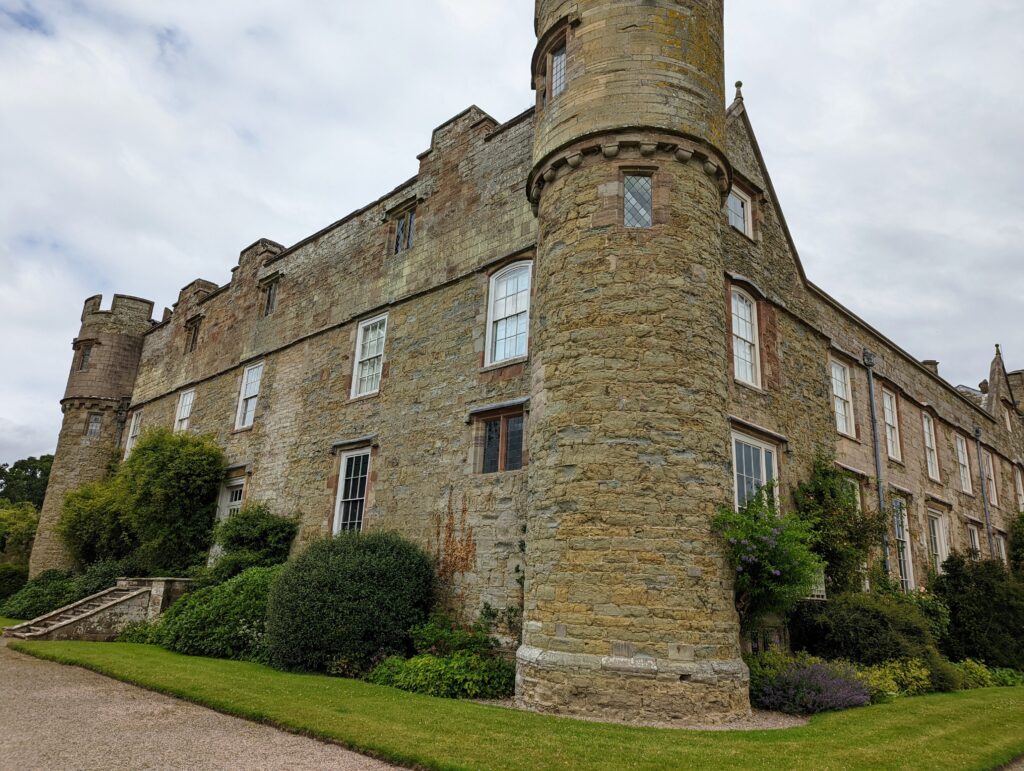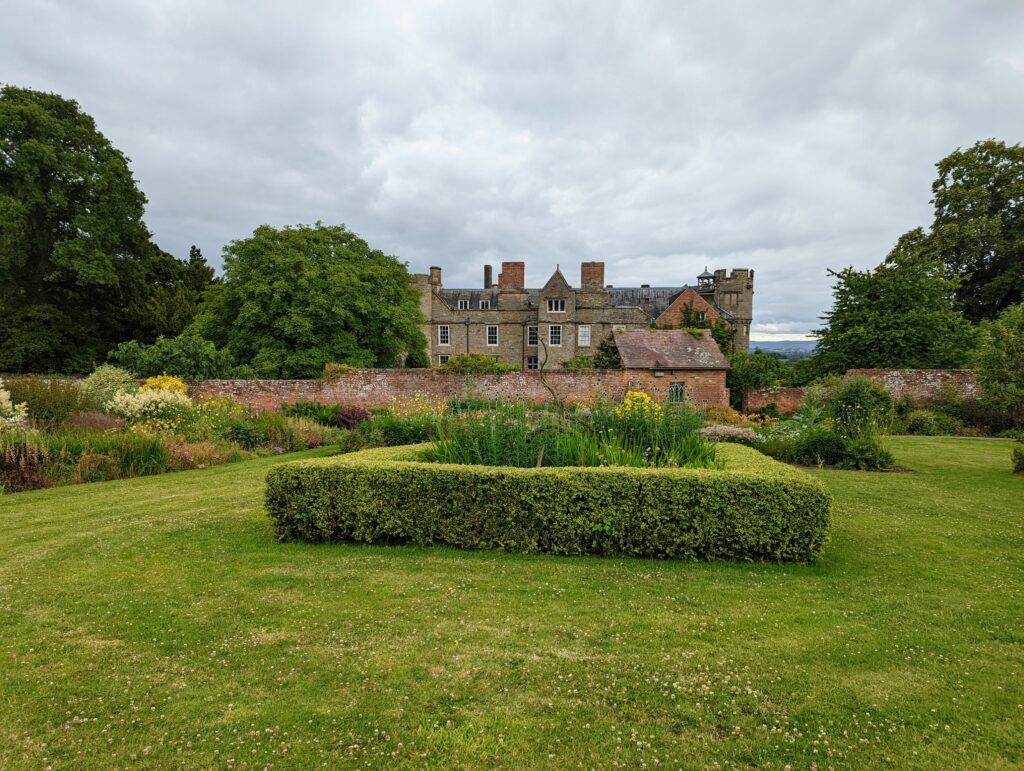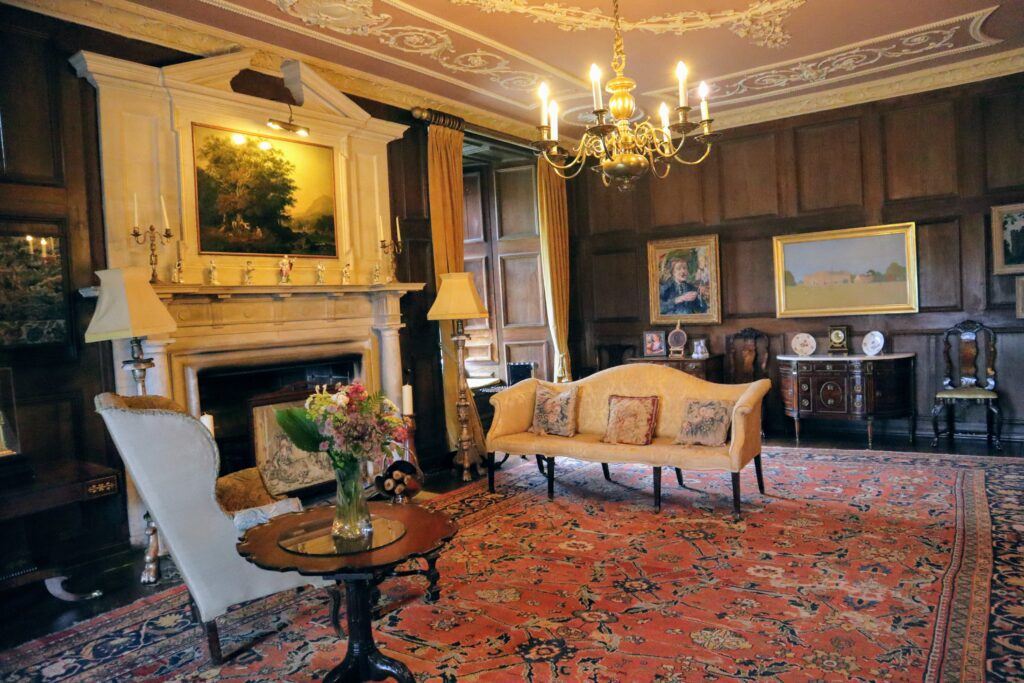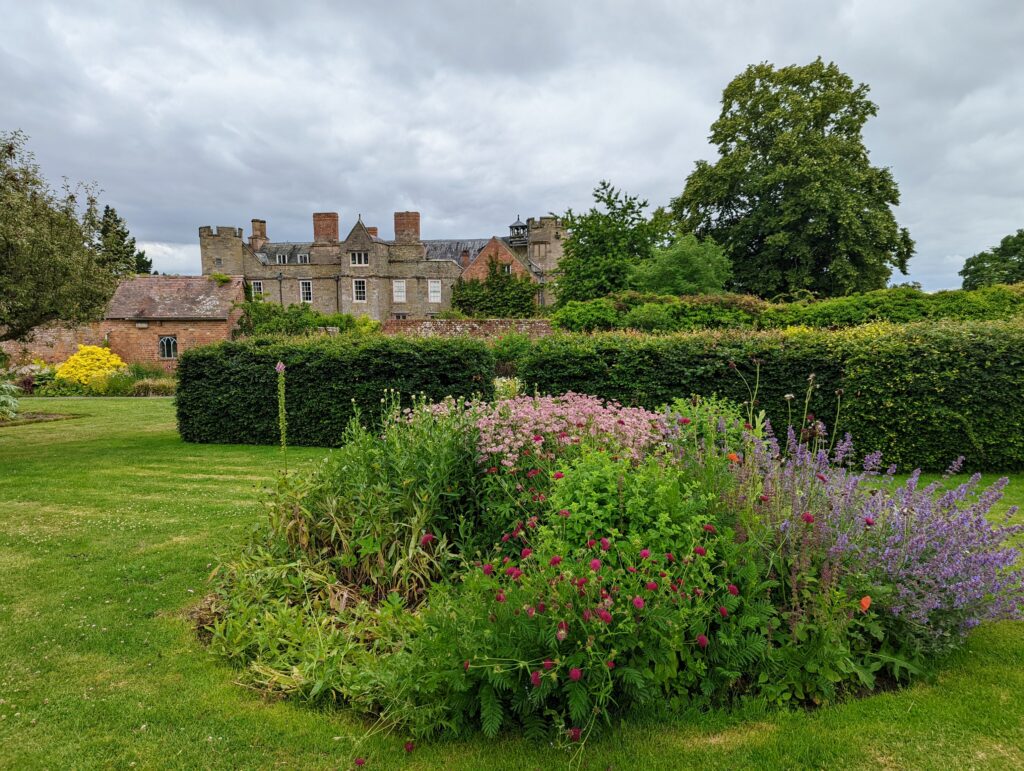Croft Castle is located in the village of Croft in Herefordshire. The site was first established in around 1085 by the Croft family and for the majority of its existence has been home to the family.
| Built | 11th Century (original castle) |
| Type | Motte-and-Bailey originally (now a country house) |
| Condition | Intact (See notes further down) |
| Ownership | National Trust look after the estate |
| Access | Public (on certain days) – Fee |
Click here to watch our tour of Croft Castle and discover its history
Early history
The original structure established was a motte-and-bailey fortification by Bernard de Croft who founded the Croft family and was a descendant of the Norsemen from northern France. There are no remains of this original structure today. Bernard spent his latter years in Norfolk and left his lands to his sons.
By the 1400s it was home to Sir John de Croft who ended up being caught up in the Welsh Revolt (war of independence) due to him marrying Owain Glyndŵr’s (the leader of the Welsh Revolt) daughter, Janet. Later in the 15th century the Croft family adopted the Welsh Wyvern as their crest – this could have been done in commemoration of Glyndŵr’s final defeat at Harlech Castle.
The Croft family were connected to the nearby Mortimer family of Wigmore and Ludlow and in 1461 Sir Richard Croft sided with the House of York during the Battle of Mortimer’s Cross, a major battle of the Wars of the Roses. The Yorkists defeated the Lancastrians at the battle (led by Owen Tudor) which was a contributing factor to the Yorkist Edward IV’s, Duke of York, (who’s mother was a Mortimer) final victory to the war and then the throne.


Sir Richard’s great grandson, Sir James Croft, was implicated in the attempt to overthrow Queen Mary in 1553 led by Sir Thomas Wyatt. As a result James was sent to the Tower of London where Princess Elizabeth was also being held as a prisoner. Wyatt was executed and fearing a similar fate, James chose not to volunteer any confession nor implicate Elizabeth. When Elizabeth became queen, she rewarded Sir James’s loyalty with estates in Herefordshire and Kent and appointed him Comptroller of the Royal Household, which essentially is a supervisor position.
It was likely that Sir James Croft was the one who decided to pull down the mediaeval castle. It was then replaced with an Elizabethan mansion constructed of brick. The new structure was much more elaborate, symbolising the status in which Sir James had earned.
By the late 1500s and after the death of Sir James, the family started to run into financial issues with firstly Sir James’s son, Edward who was put into prison due to running up debts. As a result, Edward never inherited the castle and instead it was entrusted to his son, Herbert.
Herbert was not much better, also running up debts after doing some extensive work to the castle in the early 17th century. He built the mediaeval-revival style shell with its turrets that is present today.
In both instances both Edward and then later Herbert fled the country due to their financial issues, leaving the castle to Herbert’s sons.


English Civil War
The eldest son of Herbert, William, became the head of the family due to his father’s departure from the country. Siding with the Royalists during the English Civil War, William was caught by the Parliamentarians at Hereford and imprisoned until Royalists retook the city. In 1645 William rode to the nearby Stokesay Castle to support the Royalist forces that were being besieged. The Parliamentarians eventually broke through and William was forced to flee, being pursued by the Parliamentarians all the way back to Croft. As he reached the grounds he was shot and killed.
The castle passed onto his brother, James Croft but by this time the castle was in a very poor state and he chose to settle in London and died in 1659 childless.
The Croft estate then passed to William’s younger brother Herbert. The Croft family’s position improved as he was appointed Bishop of Hereford and he used his salary to rebuild Croft castle, as well as add a new wing onto the north side.
Financial Problems
The Croft family were significantly affected financially following the South Sea Bubble – the financial collapse of the South Sea company in 1720 which ruined many investors. In 1746 the family were forced to sell the state to Richard Knight who’s family wealth came from the ownership of the Bringewood Ironworks. Richard’s daughter, Elizabeth Knight married Thomas Johnes who brought in Thomas Farnolls Pritchards who was responsible for remodelling the castle’s interior and exterior in the Rococo-Gothic style. Pritchards is credited as the designer of the world’s first iron bridge at Coalbrookdale, Shropshire and is also attributed to the Neo-Gothic styles found in Shropshire and Herefordshire.
The castle was then put up for sale in 1799 by Thomas Johnes son, also Thomas, and bought by Somerset Davies.
Return to the Crofts
Croft Castle returned to the Croft family when it was sold to Katherine, Lady Croft in 1923 by Somerset Davies’s descendants. The castle had already undergone some changes prior to the exchange where the central section of the 18th century gothic entrance was replaced with a battlemented porch and a bay window above. Oak panelling lined the entrance hall and a lot of the parapet’s crenellations which Pritchards had added were removed. The north wing was also demolished.

Today
In 1957 the Castle was threatened with complete demolition, which sadly did take effect with numerous other properties around the country. However luckily for Croft, the National Trust agreed to take on looking after the castle and estate. It has been open to the public since 1960 but the house is still occupied by members of the Croft family.
Croft Ambrey
To the north of Croft Castle lies the remains of the Iron Age Hill Fort Croft Ambrey, which is believed to have been built around 500 BC. After excavations done in the 2000s, it is also believed that the fort housed 500 people. Situated on a ridge, the fort lies in a very natural defensive position and while likely abandoned before the arrival of the Romans, could well have been used for defensive purposes afterwards.
Church of St Michael and All Angels
The Church of St Michael and All Angels is situated in close proximity to the castle and is believed to have had some presence from as early as the 12th century, which outdates the castle that we see today. The present church was likely built in the 14th century and later expanded and remodelled in the 15th and 18th centuries.
Inside the church is a chest tomb bearing the effigies of Sir Richard Croft (1509) and Dame Eleanor Croft (1520). Considering its age and the likelihood of it being moved, the condition of the carving is good and its quality is considered to be on-par with the carvings found at Westminster Abbey.
Click below to view our video exploring Croft Castle and listen to the castle’s history

